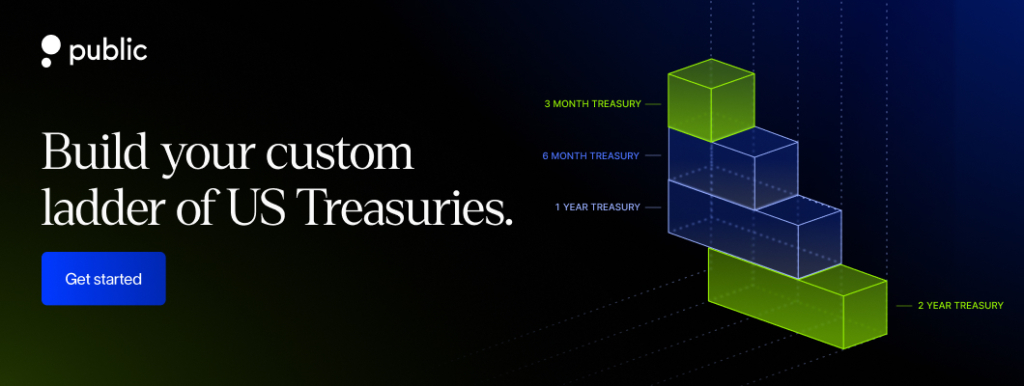What are I bonds?
In periods of intense inflation, buying Series I savings bonds, or I bonds, can help protect you and your money. These investments are issued by the U.S. Treasury, and they come with built-in inflation protection in addition to a return.
The interest you earn on an I bond comes in two parts: one is a fixed interest rate, and the other is an inflation rate, which is adjusted every six months to keep up with inflation. Currently, the interest rate on these bonds is set at 6.89%. As a result, many financial advisors consider I bonds to be an excellent way to diversify your portfolio.
These bonds are also non-marketable, which means they cannot be bought or sold on the secondary market. The only place to buy them is on the TreasuryDirect.gov, a 20-year-old website run by the federal government’s Treasury department.
How to buy an I bond
I bonds are purchased through the U.S. government’s Treasury department, just like other treasury bonds. They can be bought on the TreasuryDirect website. To buy I bonds, you’ll need to make a TreasuryDirect account by providing your social security number or tax ID, as well as email address and bank account number. It’s difficult to change the bank details after you create an account, so many users choose to select an account that they know they’ll hold onto for many years, like a savings account.
While it’s possible to buy a paper certificate accompanying these bonds, they are generally issued electronically. Because these bonds are non-marketable, they can only be cashed in with the government, via the TreasuryDirect website—or at a bank, in the case of a paper certificate.
Limits on I Bond Purchases
The minimum purchase amount for I bonds is $25, while the maximum amount is $15,000 in a calendar year—$10,000 in electronic bonds purchased from the TreasuryDirect site, and a further $5,000 in paper I bonds purchased with your refund from your tax return.
In addition, as mentioned above, I bonds are non-marketable: they cannot be bought or sold on the secondary market. Furthermore, they cannot be redeemed less than a year after purchase, and a penalty is in place if they are redeemed less than five years after purchase.
I-bonds are not the only type of Treasury bonds available for purchase. To learn more about other options, check out our guide on how to buy Treasury bonds.
Inflation adjustment
In addition to a fixed interest rate, which remains steady from the time of purchase for thirty years, I Bonds earn an inflation rate. This rate is adjusted every six months, in May and November, according to data from the Consumer Price Index. While the fixed rate set at purchase applies to the bond indefinitely, biannual changes in the inflation rate are applied to bonds as they mature. This can make calculating the rate on a series I bond complicated.
Calculating Series I savings bonds
The combined fixed interest rate and inflation rate of each I bond forms its composite rate. To calculate the I bond interest rate, the following formula is used:
Composite rate = fixed rate + (2 x semiannual inflation rate) + (fixed rate x semiannual inflation rate)
However, this formula alone doesn’t show the composite rate every time. That’s because the formula allows for a negative composite rate, and the composite rate on I bonds cannot fall below zero, the floor set by the Treasury department. In other words, any negative result from the above formula will instead be set to 0%.
When do these bonds mature?
I bonds have a maturity of 30 years. This is because they are issued with a 20-year maturity, to which an additional 10-year extended maturity is added.
These bonds cannot be cashed in within a year of purchasing. If they are cashed in after five years, no penalty is applied. However, if they are cashed in between one and five years after purchase, a penalty is applied and the three most recent months of interest are forfeited.
How are I bonds taxed?
One major advantage of I bonds is that they are exempt from federal income tax. However, they may be entirely tax-exempt if they are used for higher-education expenses. Taxpayers may choose from a variety of ways to pay taxes on I bonds. Taxes can be paid when the bonds are redeemed, but they can also be paid at maturity or annually.
If you receive an I bond as a gift rather than buying it yourself, you are still liable, as the bond’s owner, for these taxes—whether you choose to pay them annually, at maturity, or when cashing in.
What are the pros and cons of I bonds?
The biggest advantage of these bonds is that they are generally considered safe and reliable. As inflation has skyrocketed, I bonds have become an increasingly popular asset for some investors because they protect the purchaser against inflation thanks to their built-in rate increases. I bonds are also exempt from state and local taxes, making them an especially practical choice for those who live in high-tax states like New York or California. Additionally, some financial advisors say that I bonds can be a crucial part of a personal finance strategy, as they can be useful for creating an emergency fund.
The greatest disadvantage of I Bonds is that they tend to come with a low reward. With I bonds, owners give up the likelihood of extremely high rewards on cashing in, trading that possibility for a guarantee of safety. Furthermore, TreasuryDirect can be difficult to manage and rather outdated. For example, if you need to change your bank account information, you’ll need to submit a form to do so. Likewise, if you want to hit your $15,000 cap, you’ll have to buy $5,000 in paper bonds, a tedious process for many.

